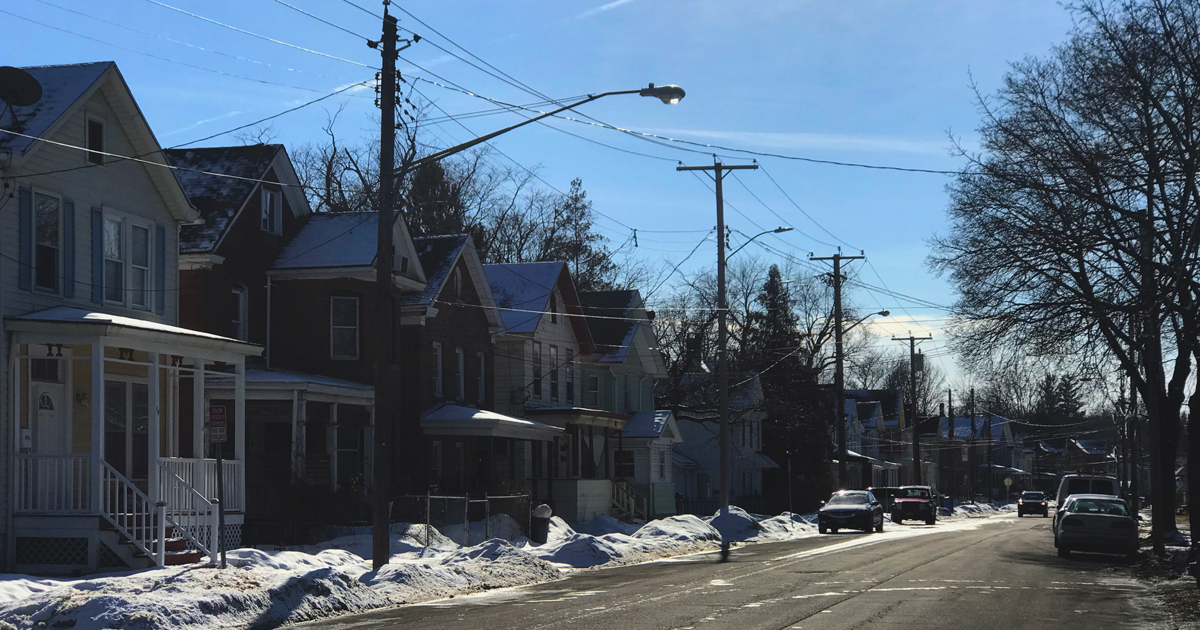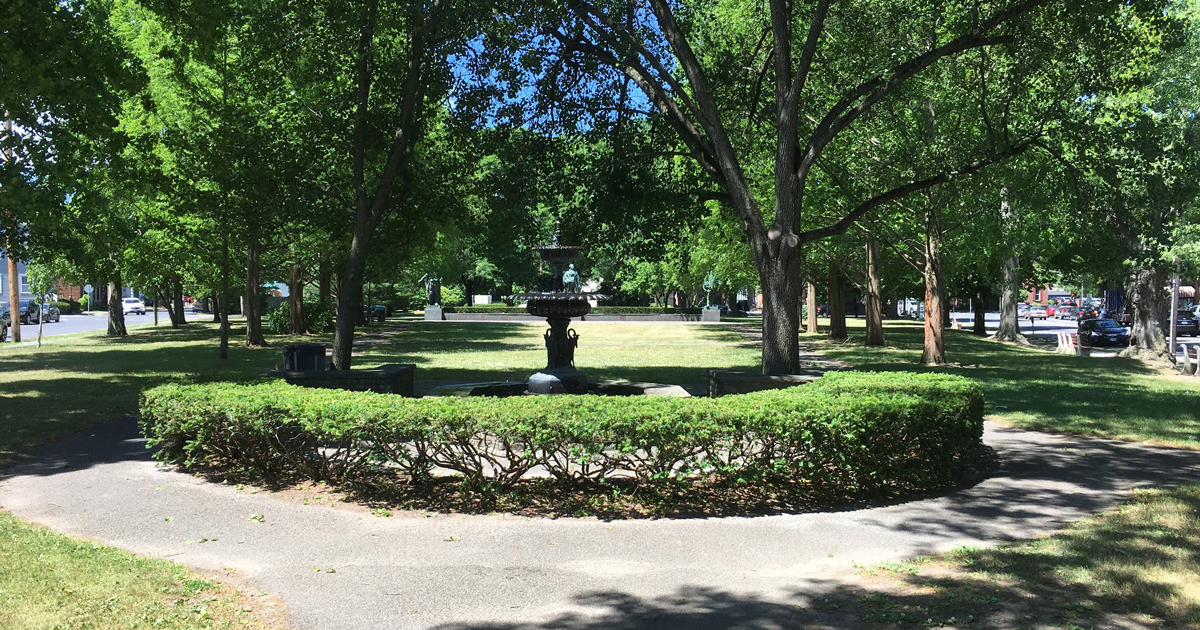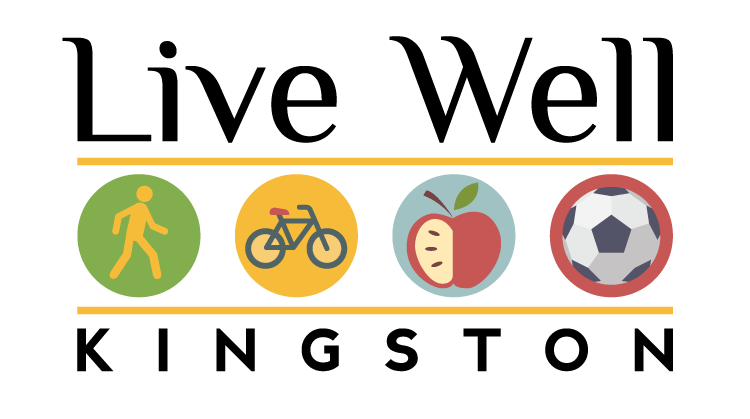Where you live influences your health, which influences how long you live.
The Robert Wood Johnson Foundation has a fascinating life expectancy calculator; plug in your exact address, and it’ll generate a life expectancy figure that is based on decades of neighborhood by neighborhood data.
The Foundation explains the wide disparities as being more complex than having access to health insurance:
“Improving health and longevity in communities starts with ensuring access to healthy food, good schools, affordable housing, and jobs that provide us the resources necessary to care for ourselves and our families—in essence, the types of conditions that can help keep us from getting sick in the first place.”
If you live in Kingston and find yourself agreeing with that, you’re in the right place! Live Well Kingston promotes the advancement of a healthy and active community by bringing partners and residents together to facilitate policy, environmental and systems changes.
We’ve already written about how to access health insurance navigation and sliding scale medical services, how to find free health and support groups, and how different organizations are mitigating food insecurity in our community. Today, we’re going to share some info about the connection between housing and health, and link to some local resources and ways that you can help be a part of housing policy in Kingston in the future.
The Connection Between Housing and Health
According to HealthAffairs, there are four pathways where there’s an intersection between quality, affordable housing and health outcomes and costs.
1. Stability

Being without a stable home is detrimental to one’s health, causing people to face higher chances of physical and mental health trauma and personal injuries. In addition to directly affecting people’s health, these traumas also cause high healthcare costs in emergency rooms as “multi-visit patients,” as written about in a recent Kingston Times article:
“Among health care executives and in medical journals this population is known as “high utilizers” or, more recently, “multi-visit patients.” To frontline ER staff they are known colloquially (though not at HealthAlliance’s hospitals, officials insist) as “frequent flyers.” While a few have chronic medical conditions like COPD and diabetes that require frequent admission to the hospital, the majority come to the ER suffering from a complicated mix of homelessness, mental illness and substance abuse.”
People who aren’t technically homeless but still housing insecure are also more likely to face poor health outcomes compared to people with stable housing situations. One example of an impact: not having stable housing makes it difficult to store expensive prescription medication, making it much harder to actually use the medication.
2. Quality & Safety

Even if people are housed in a relatively stable way, there are a number of environmental factors that are correlated with poor health outcomes. One of the most common factors is lead exposure, which leads to irreversible brain and nervous system damage for children.
One support we have in our community is the Ulster County Childhood Lead Poisoning Prevention Program. The program provides free home lead inspections and “educates the community about the dangers of lead-based paint; how lead affects our bodies, how to identify lead paint hazards and how to use lead safe work practices to appropriately deal with lead paint hazards, so that we have no more lead poisoned kids.”
According to the County’s website, homes built before 1978 may contain lead paint both inside and out, and about 87% of our housing stock was built before 1950.
The County’s Department of Health provides free home inspections to anyone in the 12401 zip code; tenants, landlords and homeowners can all request appointments. Outside of the 12401 zip code, free inspections are available if a child in your home is found to have an elevated lead level of 5-14 micrograms per deciliter of blood.
*If you are a tenant, please note that your landlord will be notified if lead paint is detected in your home.*
Other common housing conditions that are correlated with poor health:
- Water leaks
- Poor ventilation
- Dirty carpets
- Pest infestation
- Exposure to high or low temperatures
- Residential crowding
- Second-hand smoke
Removing or remediating these conditions can improve health outcomes and reduce health care costs. Please contact the City of Kingston’s Building Safety and Zoning Enforcement department for more information.
An available support for paying heating bills is the Home Energy Assistance Program, which provides funding to low-income individuals over the age of sixty.
3. Affordability

In 2017, 55% of Ulster County families spent more than 30 percent of their income on housing, designating them as “cost-burdened.”
29.8% of those households were considered “severely cost-burdenered” because they spent more than 50 percent of their income on housing.
Studies have found that low-income families who are cost-burdened are much less likely to have a regular source of medical care, are likely to postpone needed treatment, and 23% more likely to face difficulty purchasing food.
Some local housing affordability supports include:
RUPCO’s Emergency Assistance Fund
RUPCO’s Housing Choice Voucher Program (Open from March 1 to April 1)
Many local healthcare agencies that provide patient navigator services will connect patients with needed housing supports.
4. Neighborhood
One’s physical surroundings where they live have an effect on health. Here are some of the biggest factors:
Availability of public transportation to work
In 2014, a study published in the International Journal of Environmental Research and Public Health said that more available public transportation can equal more physical activity and reduced risks of obesity, diabetes and premature death for residents:
“There is convincing evidence that engaging in regular moderate-to-vigorous physical activity reduces the risks of obesity, cardiovascular diseases, diabetes and premature death. Active commuting is receiving increased attention in this context because its routine-based nature provides regular physical activity during the week. Active commuting can be performed walking or cycling all the way to work or as part of a multimodal trip (e.g., walking or cycling in combination with using public transportation), that involves some walking or cycling to a transit stop, transfers and a walk to the end location, or driving in a car some of the way in combination with walking, cycling or public transportation. Evidence has shown that active commuters are more likely to reach the 2010 WHO recommendations of 150 min of moderate intensity physical activity (MPA) per week. Public transportation commuters have been found to accumulate significantly more MPA per day (5–10 min) compared to non-public transportation users.”
Grocery stores or food stands with nutritious food
In 2013, a national research and action institute called PolicyLink, in collaboration with a nonprofit called The Food Trust, wrote about the link between access to healthy food and better health outcomes:
“Living closer to healthy food retail is associated with better eating habits and decreased risk for obesity and diet-related diseases… action must be taken across all levels… to leverage resources and target efforts to the places with the greatest need.”
Safe spaces to exercise and play in

A 2016 article in the International Journal of Environmental Research and Public Health said that living near well-designed parks is good for nearby residents’ health:
“Proximity to [a] park reported by residents conducive for physical activity (with walking paths, large fields, playgrounds for children and tennis courts) was associated with physical activity.”
Green spaces

In 2015, an article in the American Journal of Public Health said that just the sight of green space can help reduce the stress of passersby:
“Ambulatory heart rate [were monitored] as participants in Philadelphia, Pennsylvania walked past vacant lots before and after a greening remediation treatment of randomly selected lots. Being in view of a greened vacant lot decreased heart rate significantly more than did being in view of a nongreened vacant lot or not in view of any vacant lot. Remediating neighborhood blight may reduce stress and improve health.
Safe Routes to School
In 2015, a study in Injury Epidemiology titled Association of the Safe Routes to School program with school-age pedestrian and bicyclist injury risk in Texas said that Safe Routes to School has a demonstrable impact on pedestrian and bicyclist safety:
“Safe Routes to School (SRTS) is a federally funded transportation program for facilitating physically active commuting to and from school in children through improvements of the built environment, such as sidewalks, bicycle lanes, and safe crossings.”
After the implementation of the program the authors found:
“The annualized rates of pedestrian and bicyclist injuries between pre- and post-SRTS periods declined 42.5% in children aged 5 to 19 years and 33.0% in adults aged 30 to 64 years. These results indicate that the implementation of the SRTS program in Texas may have contributed to declines in school-age pedestrian and bicyclist injuries.”
In our own community, The City of Kingston was recently awarded a $535,000 grant through the Safe Routes to School program to improve pedestrian safety on Henry Street, from Broadway to the George Washington Elementary School. A preliminary design will be presented at 4:30 p.m. on Tuesday, March 5 in the auditorium at the George Washington Elementary School at 67 Wall Street in Kingston. The design will include a complete reconstruction of sidewalks, tree plantings along the street, a side path for walkers and nonmotorized traffic, a secure and covered bike rack at the school, and traffic-calming measures in front of the school. We will update this post with a link to the presentation after the meeting has taken place.
How to get involved
Housing and neighborhoods are not just about having a place to stay and keep your possessions; they have major implications on community and individual health outcomes. Beyond the programs and initiatives listed in this article, you can add your voice to the conversation on the future of housing in Kingston, by participating in one of seven housing forums at City Hall. The dates and times are listed below:
March 6 Homeowners, at 6:30pm
March 11 Tenants, at 6:30pm
April 8 Landlords, at 6:30pm
April 29 Developers, at 6:30pm
May 1 Homeless and housing insecure, at 6:30pm
May 29 Policy advocates, at 6:30pm



